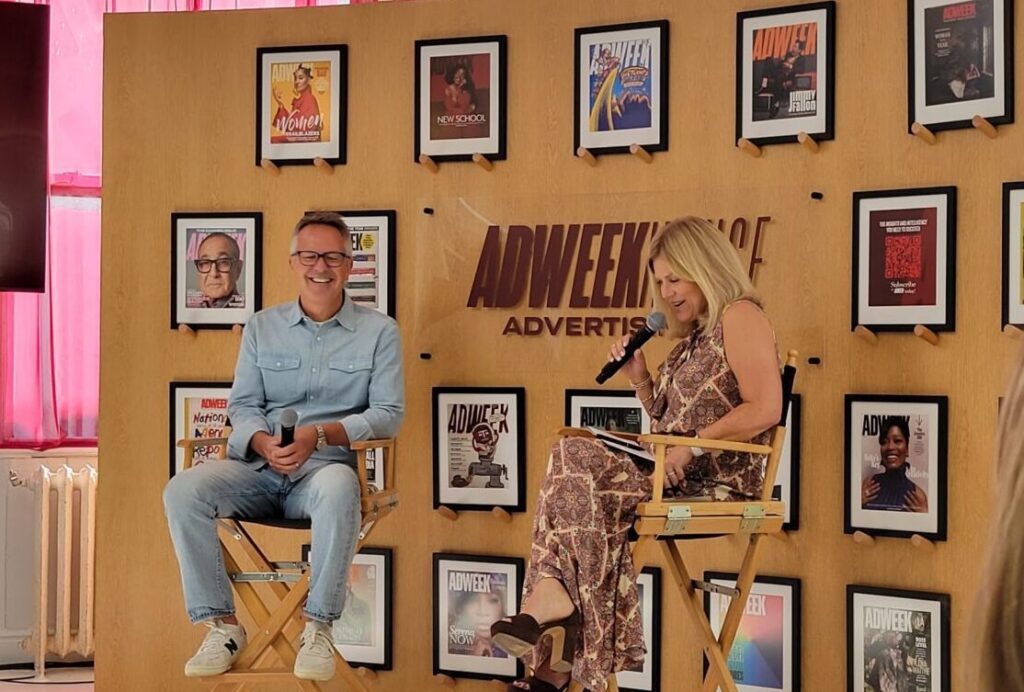Douglas Freeland first heard about Hot Import Nights from a regional colleague at McDonald’s.
“The first time I went to one, I was amazed at the crowd: a cross section of young adults, 16 to 24, about 70% male. I thought, we have to get into this,” says Freeland, McDonald’s Corp. director of brand/entertainment strategy.
McDonald’s takes Big Mac to Hot Import Night auto shows in 20 markets through yearend and sponsors top tuner Jay Laub. The shows, produced by Los Angeles-based Vision Entertainment, showcase tricked-out cars in a nightclub atmosphere, with DJs, dancing and videogames. Big Mac hands out “Are you Mac enough?” stickers and hosts text-message voting for visitors’ fave cars. GMR Marketing, New Berlin, WI, handles.
Meanwhile, this month Big Mac breaks an instant-win game giving away Sony’s hot PlayStation Portable systems (they play videogames, movies and music) and 50,000 smaller PlayStation prizes. Codes on Big Mac and fry boxes send players online to see if they win. Arc Worldwide, Chicago, handles.
The Sony promo follows on the heels of an on-pack game that dangled a grand prize of 10 concerts at any House of Blues club in 10 cities. (Diners entered codes from Big Mac boxes online or via text message.) The Marketing Store Worldwide, Oak Brook, IL, handled.
All three are part of Big Mac’s entertainment pitch to young adults under the tagline “Are you Mac enough?” McD taps urban culture trends that spread beyond city limits.
“It’s more about an urban mindset than an urban setting. A youth in Montana may have an urban mindset even if not in an urban setting,” Freeland says. “Young adults are more comfortable moving between cultures; they’re not as uptight about ethnicity as prior generations.”
That’s fueling an evolution in single-target ethnic marketing to multi-cultural, or cross-consumer marketing that reaches across audience segments with a single thread: culture, geography, interests, age. It’s about mindset, not minorities.
“Urban marketing is traditionally seen as African-American, but it has transcended to multiple consumers who share a frame of mind,” says Sherman Wright, managing partner of Chicago agency Commonground.
“Young adults under 35 sample a variety of cultures,” says Commonground managing partner Ahmad Islam. “That doesn’t change their ethnicity, but their interests are influenced by a variety of cultures.”
Culture — especially music, fashion, entertainment and sports — cuts across ethnicities, but brands must anchor themselves to one common thread.
Twenty-one-month-old Commonground started with the universal appeal of urban music among men 21 to 27 for Miller Brewing Co.’s Flavor 2 Savor summer concert series and sweeps. The series, for Miller’s MGD brand, features hip-hop, soul and R&B; the sweeps awards trips to a New York City concert. Miller tailors concerts to local tastes, using Miller market managers, bottlers and even radio station partners to identify hot artists and venues in each market.
“Above-the-line ads may focus on that universal truth to speak to a larger audience; then local executions leverage local insights to raise the relevancy to consumers in a specific market,” Wright says.
It’s that local/universal balance that distinguishes cross-cultural marketing. Miller’s October-April print and radio campaign, “Spoken Word,” featured poetry inspired by MGD. “It started with African-Americans, but delivered a message that was relevant to a much broader audience,” says Wright, whose shop handled the ads. Radio ran on general-market stations; print ran in targeted publications.
“Five years ago, companies would have had separate budgets for African-Americans, Hispanics, Asians and the general market,” says Tru Pettigrew, senior VP-urban and multi-cultural marketing for AMP Agency, New York. “Now, they’re trending to more lifestyle marketing that cuts a horizontal line across ethnicities.”
Two years ago, AMP helped Coors Brewing Co. skew Coors Light to an urban crowd. Coors started with African-Americans; AMP found the positioning suited a broader urban audience. AMP paired Coors Light with a hip-hop tour, with sampling and after-concert parties. “Black, white, Hispanic and Asian men were exposed to the brand in hip hop environment,” Pettigrew says.
Always urban?
Multi-cultural marketing works outside city limits, too. Commonground helped a packaged goods client research women shoppers across all geographic and socio-graphic segments. The universal truth: All women want clean, bright stores and fresh produce. The differences: Some women are more brand-oriented; others want wide variety and exotic produce. Some are more responsive to testimonials than others. But all women are more focused on a price-value equation than retailers realized. “The relationship between emotional and rational came through loud and clear for us,” Islam says.
How can brands measure success reaching across consumer groups? McDonald’s tracks brand affinity: “It’s less about sales and more about brand image as we connect through lifestyle,” Freeland says.
 Network
Network

